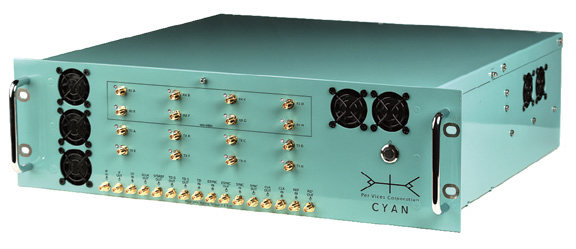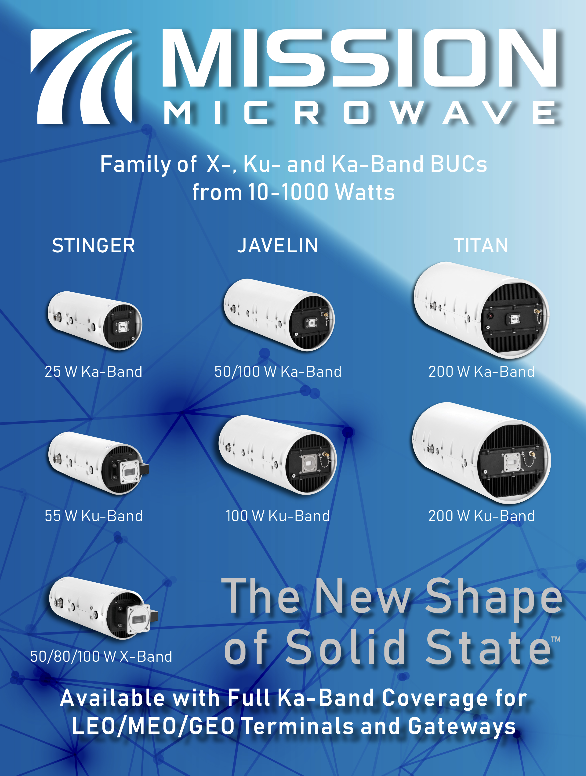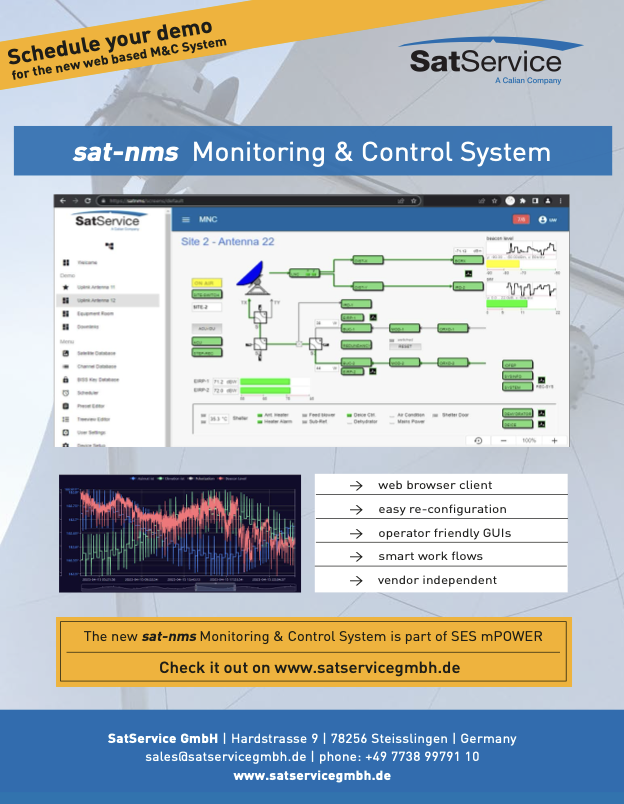The impact of high-performance software-defined Radios (SDRs)
Signals Intelligence (SIGINT) plays a crucial role in gathering and interpreting information from the electromagnetic spectrum. The advent of Software Defined Radios (SDRs) has transformed the landscape of SIGINT by providing unprecedented flexibility and performance.

This article explores the impact of high-performance SDRs on SIGINT, focusing on their key features such as very high RF sampling bandwidths, numerous independent radio chains, wide band tuning capabilities, and the integration of on-board Field-Programmable Gate Arrays (FPGAs) for advanced digital signal processing.
In the ever-evolving world of signals intelligence, the ability to swiftly adapt to emerging threats and technologies is paramount. Traditional hardware-based radios have limitations in terms of flexibility, upgradeability, and adaptability to evolving communication standards. Software Defined Radios (SDRs) have emerged as a game-changer in the field of SIGINT, offering unparalleled advantages in terms of performance, agility, and versatility.
SDRs represent a paradigm shift in the field of wireless communication by redefining the traditional hardware- centric approach. Unlike conventional radios with fixed functionalities determined by their hardware components, SDRs leverage advanced software algorithms to perform various signal processing tasks.
The key distinction lies in the flexibility to adapt and modify radio behavior on-the-fly, allowing for the implementation of diverse waveforms and communication protocols through software configurations. This adaptability makes SDRs highly versatile, enabling users to address evolving communication standards without the need for hardware modifications.
Essentially, SDRs convert the traditionally hardware-defined functions of a radio into software-defined processes, providing a dynamic and programmable solution for a wide range of applications.
Evolution Of SIGINT + The Role Of SDRs
Historically, SIGINT has been crucial in gathering intelligence by intercepting, analyzing, and interpreting signals from communication systems, radars, and other electronic sources. Traditional SIGINT systems relied on dedicated hardware for specific frequency bands and modulation schemes, making them rigid and challenging to upgrade.

SDRs, on the other hand, decouple the signal processing tasks from dedicated hardware, allowing for the implementation of diverse waveforms and protocols through software. This flexibility enables intelligence agencies to adapt rapidly to changing communication technologies, a critical capability in today’s dynamic and fast-paced environment.
High RF Sampling Bandwidths: Redefining Signal Capture
One of the defining features of high-performance SDRs is their ability to achieve very high Radio Frequency (RF) sampling bandwidths. This capability allows SDRs to capture a wide range of signals simultaneously, providing a panoramic view of the electromagnetic spectrum. This is particularly advantageous in SIGINT, where the ability to monitor multiple signals across various frequencies is crucial for comprehensive intelligence gathering.
The increased RF sampling bandwidth not only enhances the breadth of signal coverage but also improves the resolution and accuracy of intercepted signals. This is essential for the identification and analysis of complex communication networks employing frequency-hopping or spread spectrum techniques.
Numerous Independent Radio Chain: Unprecedented Parallel Processing
Traditional radios often have limitations in terms of the number of simultaneous channels they can handle. High-performance SDRs, however, feature multiple independent receive and transmit radio chains, enabling parallel processing of signals. This parallelism significantly enhances the SDR’s capacity to handle a large number of signals simultaneously, a capability that is invaluable in crowded and contested electromagnetic environments.
The ability to process signals independently opens up new possibilities for intelligence gathering, allowing operators to monitor and analyze multiple targets or communication channels concurrently. This parallel processing capability is especially crucial in scenarios where real-time intelligence is essential, such as in military operations or counter-terrorism efforts.
Wide Band Tuning Capabilities: Adapting to Dynamic Threats
Traditional radios are typically designed to operate within specific frequency bands, limiting their adaptability to dynamic and agile communication systems. High-performance SDRs, however, boast wide band tuning capabilities, allowing them to rapidly switch between different frequency ranges. This flexibility is vital in the face of adversaries employing frequency agility, where they can dynamically shift their communication frequencies to evade detection. High-performance SDRs empower SIGINT operators to swiftly adapt to such changes, ensuring that no communication goes unnoticed or unanalyzed.
On-Board FPGAs: Powering Advanced Digital Signal Processing
The integration of on-board Field-Programmable Gate Arrays (FPGAs) is a key feature that sets high-performance SDRs apart. FPGAs are reconfigurable hardware devices that can be programmed to perform specific digital signal processing tasks efficiently. In the context of SIGINT, on-board FPGAs bring a host of advantages, including real-time processing, advanced filtering, (de)modulation, and more.
Real-Time Processing
The real-time processing capabilities of on-board FPGAs enable SDRs to analyze and respond to signals on the fly. This is particularly crucial in scenarios where split-second decisions are required, such as in electronic warfare or intelligence operations in contested environments.
Advanced Filtering
Filtering is an essential aspect of signal processing in SIGINT. On-board FPGAs allow for the implementation of complex and adaptive filtering algorithms, enhancing the ability to extract relevant information from a wide array of signals. This is especially valuable in situations where the signal of interest is buried within noise or interference.
(De)modulation:
FPGAs enable high-performance SDRs to demodulate a wide range of signals with precision and accuracy. This capability is fundamental in understanding the content of intercepted communications, whether it’s voice, data, or other forms of information.
Spectrum Analysis:
The on-board FPGAs also facilitate advanced spectrum analysis, providing detailed insights into the frequency and modulation characteristics of intercepted signals. This information is crucial for signal classification, identification, and the detection of anomalous or suspicious activities.
Applications of High-Performance SDRs in SIGINT
The impact of high-performance SDRs on SIGINT extends to various applications, ranging from military intelligence to law enforcement and cybersecurity. Let’s delve into some specific scenarios where these SDRs have proven to be indispensable.
Military Intelligence and Electronic Warfare
High-performance SDRs play a pivotal role in lligence by providing a comprehensive view of the electromagnetic spectrum. Military operations often involve complex communication networks, and the ability to monitor, intercept, and analyze enemy communications in real-time is crucial for gaining a tactical advantage. In Electronic Warfare (EW) scenarios, where disrupting or deceiving enemy communication is paramount, the agility and flexibility of SDRs become even more significant. The parallel processing capabilities, wide band tuning, and on-board FPGAs allow military operators to adapt rapidly to changing threat environments.
Counter-Terrorism and Law Enforcement
In counter-terrorism and law enforcement efforts, the ability to monitor and analyze communication networks is essential for preventing and responding to threats. High-performance SDRs provide law enforcement agencies with the tools to intercept and decipher a wide range of communication signals, from traditional voice transmissions to modern digital data exchanges> The versatility of SDRs allows for seamless integration into surveillance systems, enabling law enforcement to monitor and track potential threats. The real-time processing capabilities of on-board FPGAs are particularly valuable in scenarios where rapid response is critical for public safety.
Cybersecurity and Spectrum Monitoring
As cyber threats continue to evolve, monitoring the electromagnetic spectrum for suspicious or malicious signals becomes a crucial aspect of cybersecurity. High-performance SDRs, with their wide band tuning capabilities and advanced signal processing capabilities, provide cybersecurity professionals with the means to detect and analyze anomalous activities. Spectrum monitoring using SDRs is not limited to cybersecurity alone; it also extends to regulatory compliance and spectrum management. Monitoring and analyzing the spectrum allow authorities to identify and mitigate interference issues, ensure adherence to communication regulations, and optimize spectrum allocation.
Challenges + Future Developments
While high-performance SDRs have revolutionized SIGINT, they are not without challenges. Some of the notable challenges include:
Spectrum Congestion and Interference
As the demand for wireless communication continues to grow, the electromagnetic spectrum becomes increasingly congested. This congestion can lead to interference issues, making it challenging for SDRs to distinguish between signals of interest and unwanted noise. Advanced signal processing techniques and machine learning algorithms are being explored to address this challenge.

High Performance Software Defined Radio (Cyan SDR)
Cybersecurity Concerns
As SDRs rely heavily on software, they are susceptible to cybersecurity threats. Ensuring the security of SDRs and preventing unauthorized access or manipulation of the software is a priority.
There have been significant improvements in overall network security which helps to ensure these SDRs connected to networks are safely operated, however, the integration becomes a crucial element to consider.
Integration with Other Intelligence Sources
SIGINT is just one piece of the intelligence puzzle. Integrating information from various intelligence sources, such as Human Intelligence (HUMINT) and Geospatial Intelligence (GEOINT), remains a challenge. Future developments may focus on creating more seamless integration between different intelligence disciplines.
The impact of high-performance Software Defined Radios on Signals Intelligence cannot be overstated. These advanced systems have redefined the way intelligence is gathered, providing unprecedented flexibility, adaptability, and performance. Very high RF sampling bandwidths, numerous independent radio chains, wide band tuning capabilities, and on-board FPGAs for advanced signal processing have collectively elevated the capabilities of SIGINT to new heights.

As technology continues to advance, the role of high- performance SDRs in SIGINT will likely expand further. The ability to rapidly adapt to emerging threats, process signals in real-time, and analyze complex communication networks positions SDRs as indispensable tools for intelligence agencies, military forces, and law enforcement worldwide. The ongoing evolution of SDR technology holds the promise of even greater advancements in the field of Signals Intelligence, ensuring that intelligence professionals stay ahead in the ever-changing landscape of electronic communication.
www.pervices.com

Brandon Malatest
Author Brandon Malatest is the COO and Co-Founder of Per Vices Corporation, a leader in Software Defined Radio technology. Brandon has an honour’s degree in Physics with a specialization in Experimental Physics from the University of Waterloo in Ontario, Canada.
Per Vices, a leader in software defined radios, offering the highest channel count and bandwidth SDRs for signals intelligence and EW markets while working closely with customers for successful integrations. The high performance radios with extremely high sampling bandwidths, channel counts, and on-board signal processing capabilities, enables customers to leverage Per Vices SDRs to achieve superior performance, enhanced flexibility, and future-proof solutions.
Contact solutions@pervices.com to learn more information.



